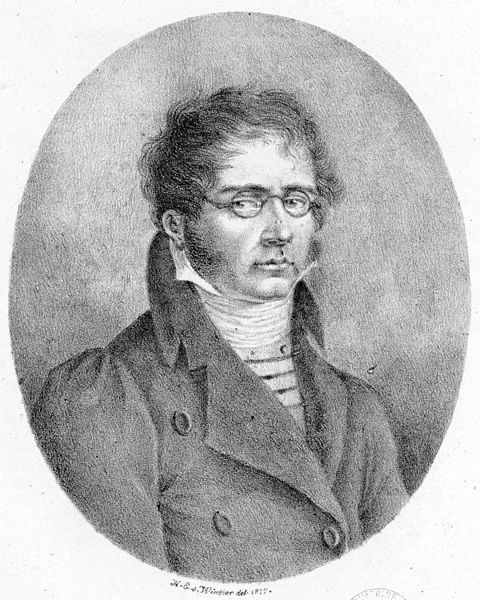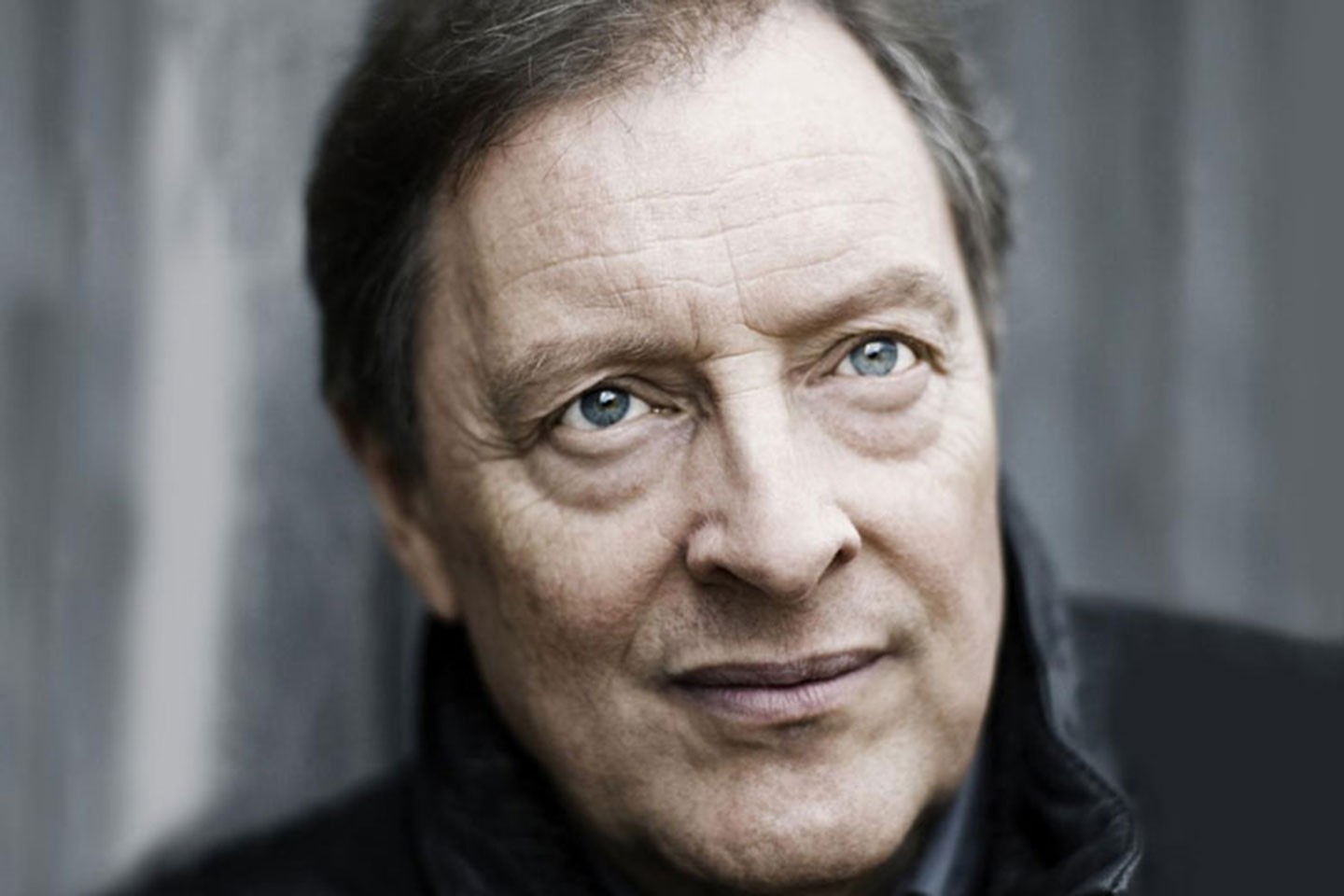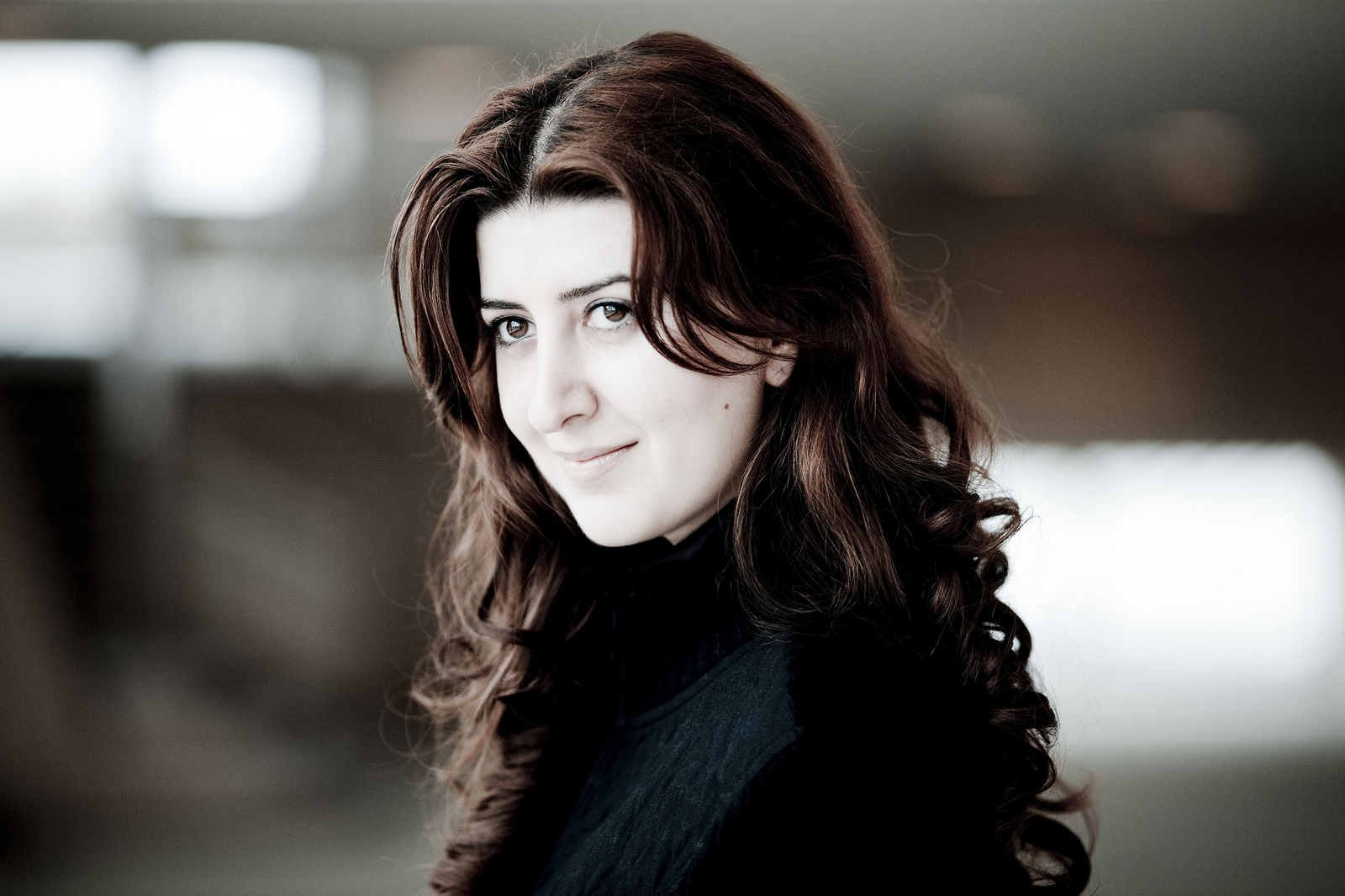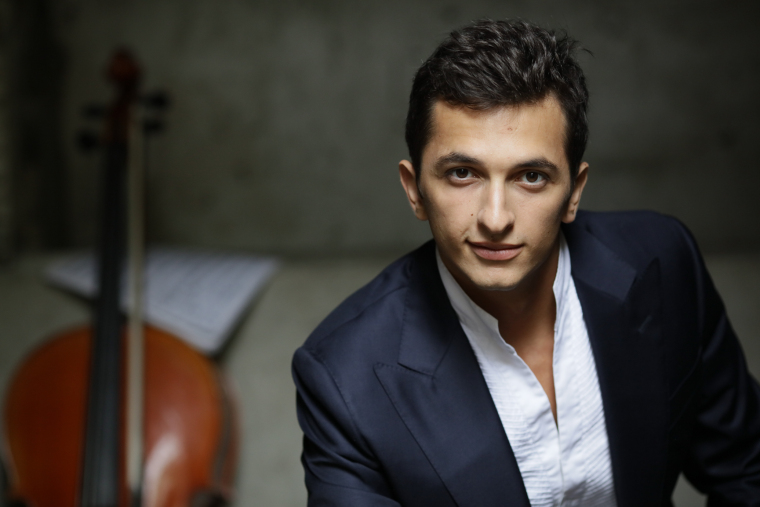Arghamanyan, Pascal, Howard Griffiths, MKO
Franz Danzi: Overture & Concerti
Media Received for Reviewing

2018-06-28 — Original posting
Table of Contents
Introduction
This CD presents music that is rarely ever played. Who knows details about Franz Danzi?? Let me first give some information on the composer (summarizing the information from Wikipedia), then I’ll introduce the artists, finally, I’ll take a short look at the music.
The Composer: Franz Ignaz Danzi (1763 – 1826)
Franz Danzi was a cellist, composer, and conductor. He was the son of the Italian cellist Innocenz Danzi. Franz was born in Schwetzingen (near Heidelberg), was raised and received his education in Mannheim. 1778, he joined the orchestra at the court in Mannheim and soon thereafter also started composing. The court moved to Munich, making Mannheim a more provincial place. Danzi therefore followed the court to Munich in 1784, to re-join the orchestra. He got married to an opera singer in 1790, and started traveling with his wife, returning to Munich in 1798, where ho took the position of assistant Kapellmeister. 1807, unhappy with the progress of his career, he joined the court in Stuttgart, again as Kapellmeister. Five years later, he moved to Karlsruhe, where he spent the rest of his life.
Danzi was not a prolific composer, nor did he cover all genres. His oeuvre largely consists of chamber music (from duos to string quartets, up to septets, music for wind instruments, as well as for piano and wind instruments), a series of concertos, sinfonia concertante, and symphonies, very little for the piano alone. Danzi knew and admired Wolfgang Amadeus Mozart (1756 – 1791), he apparently had mixed feelings towards his contemporary Ludwig van Beethoven (1770 – 1827). And he was a mentor and promoter for the young Carl Maria von Weber (1786 – 1826).
The Artists
Howard Griffiths, Munich Chamber Orchestra
The conductor Howard Griffiths (*1950, see also Wikipedia) grew up in Hastings, England, later received his musical education at the Royal College of Music in London. Since 1981, he is living in Switzerland. People in the Zurich area know him well, as he has spent major parts of his career in Zurich and still keeps an active role today. Some key stations in his career and activities:
- 1996 – 2006: Artistic Director & Principal Conductor, Zurich Chamber Orchestra (Zürcher Kammerorchester ZKO), taking over from Edmond de Stoutz (1920 – 1997);
- 2007 – 2018: General Music Director, Brandenburg State Orchestra, Frankfurt/Oder;
- since 2000, Griffiths is Artistic Director of the Orpheum Foundation for the Advancement of Young Soloists, located in Zurich.
Besides this, Howard Griffiths has been—and still is—very active as guest conductor throughout Europe. One such role is with the Munich Chamber Orchestra (Münchener Kammerorchester, MKO). This ensemble exists since 1950. Its principal conductors over the years were
- 1950 – 1956: Christoph Stepp (founder)
- 1956 – 1995: Hans Stadlmair (*1929)
- 1995 – 2006: Christoph Poppen (*1956)
- 2006 – 2016: Alexander Liebreich (*1968)
- since 2016: Clemens Schuldt.
The MKO’s primary concert venue is the Prinzregententheater in Munich. The orchestra’s repertoire covers a broad range from baroque to contemporary music. The ensemble is regularly commissioning new works from contemporary composers.
Nareh Arghamanyan, Piano
The Armenian pianist Nareh Arghamanyan (*1989, see also Wikipedia), started playing the piano at age 5. 1997, Nareh Arghamanyan entered the Tchaikovsky Music School for Talented Children in Yerevan, where she studied with Alexander Gurgenov. 2004, Nareh entered the University of Music and Performing Arts, Vienna, as the youngest student, studying under Heinz Medjimorec (*1940). Nareh Arghamanyan won a series of prizes at competitions between 1997 and 2009. What started her international career was the first prize at the 2008 Montreal International Musical Competition. Nareh Arghamanyan is since pursuing an international career as concert pianist and has recorded several CDs with works by Bach, classical and romantic composers, Sergei Rachmaninoff, Serge Prokofiev, and Aram Khachaturian.
Nareh Arghamanyan is receiving support by the Orpheum Foundation for the Advancement of Young Soloists. Her instrument in this recording was a Steinway & Sons concert grand, model D-274.
Aurélien Pascal, Cello
Born 1994 in Paris into a family of musicians, Aurélien Pascal started playing the cello at age 5. In his education, mainly at the Conservatoire National Supérieur de Paris (2010 – 2015), and in masterclasses he received vital input from cellists / teachers such as János Starker (1924-2013), Gautier Capuçon (*1981), Frans Helmerson (*1945), and Gary Hoffman (*1956). After first competition successes in Finland and Germany, Aurélien Pascal has already launched an international career, both as soloist, as well as chamber musician, and he also has started recording music for CD. Amongst others, the one below, with a concerto by Danzi.
Like Nareh Arghamanyan, Aurélien Pascal is receiving support by the Orpheum Foundation for the Advancement of Young Soloists. He plays an 1850 cello by the French luthier Charles-Adolphe Gand (1812 – 1866).
The CD
Franz Danzi: Overture in D major, P.228; Piano Concerto in E♭ major, op.4, P.229; Cello Concerto in E minor, P.243
Howard Griffiths — Munich Chamber Orchestra
Nareh Arghamanyan, piano
Aurélien Pascal, cello
Sony Music 8898 5361 082 (CD, stereo); ℗ / © 2018; booklet 24 pp. de/en

Track Listing
- Piano Concerto in E♭ major, op.4, P.229 (27’26”)
- Allegro (12’43”)
- Andante moderato (6’44”)
- Allegretto (7’59”)
- Overture in D major, P.228 (6’11”)
- Allegro (2’11”)
- Andantino (1’33”)
- Allegretto ma non troppo (2’28”)
- Cello Concerto in E minor, P.243 (24’58”)
- Allegro (13’37”)
- Larghetto (4’24”)
- Allegretto (7’00”)
Overall duration: 58’35”
Piano Concerto in E♭ major, op.4, P.229
The majority of Danzi’s concertos are for wind instruments (4 flute concertos, 5 for bassoon, 2 for horn, a sinfonia concertante for flute and clarinet, a double concerto for clarinet, bassoon and orchestra). This two concerti on this CD therefore are somewhat unique in Danzi’s oeuvre. Danzi is largely absent from concert programs today, and so, one can safely assume that the two concerti on this CD are largely unknown, actual discoveries. And what discoveries they are! I actually rate them vastly higher than the Overture. The latter isn’t more than a short intermezzo for entertainment purposes, or maybe an opening for a concert.
The Performance
Unlike the Overture, this concerto (as also the one for cello) is a true little gem! In fact, it doesn’t need to hide between some of the early Mozart piano concertos! In the program notes (featuring one-page articles by the two soloists), Nareh Arghamanyan states that the concerto reminds her of Mozart’s E♭ major concerti (k.271, K.482, K.365). I personally would not go as far as linking to specific Mozart concerti, but otherwise I can only agree with her.
I. Allegro
Danzi proves quite inventive in his themes. They are all attractive and well-formed. The one slight snag is that the composer tends to repeat most ideas at a different level, like a sequence (Beethoven might have called this a “Schusterfleck“). However, not like in the Overture, the themes are well-formed and inventive in themselves, so this does not hurt at all. I like Nareh Arghamanyan’s playing, her light, careful articulation, the clarity of the left hand. She is diligent and detailed in dynamics (as is the orchestral accompaniment), subtle in agogics, in the tempo disposition in general. Nareh Arghamanyan’s keyboard touch is excellent, very subtle, the ornamentation and the short cadenzas really natural and well-fitting.
While the right hand might (almost) be by Mozart, Danzi tends to use different textures in the left hand. Mozart often uses Alberti basses or other broken chords, Danzi often uses simpler, alternating pattern—but not excessively
II. Andante moderato
A serene, calm movement with beautiful cantabile right hand in the solo, very expressive. The interaction with the orchestra is excellent. Nareh Arghamanyan’s solo appears to sing, to tell stories, almost like a recitative, and the orchestra responds, illustrates.
III. Allegretto
What a joyful & fun movement! Not boisterous, but serene, light, playful, full of fantasy. Nareh Arghamanyan plays with agility, full of plasticity, and always subtle, transparent, light, with lots of care file detail and phrasing.
Overall: a joy to listen to! Sure, ideally, one should play this on a fortepiano, i,.e., on a period instrument or replica. However, Nareh Arghamanyan’s articulation is so light and clear that the result is not so far from a “historic” performance. Arghamanyan certainly does not excessively / inappropriately indulge in the sonority of the Steinway grand.
Rating: ★★★★
Overture in D major, P.228
Compared to overtures by Danzi’s contemporaries, such as Wolfgang Amadeus Mozart or Ludwig van Beethoven, this overture is short already, and it consists of three tiny movements. It seems that Danzi was resorting to the scheme of a three-part (fast-slow-fast) overture (often called “sinfonia”, and actually the origin of the classical symphony) that was popular with early classical and baroque composers, such as George Frideric Handel (1685 – 1759).
While listening to the three short movements, spontaneously, the title “Les petits riens” (The little nothings) came to mind (actually a ballet by the young Wolfgang Amadeus Mozart). But that is merely a reflection on the short duration and the lightness of the atmosphere in this music:
The Performance
From its texture, the instrumental disposition, this could just as well be a short version of an early symphony by Franz Joseph Haydn (1732 – 1809). But sure, Danzi is not a second Mozart, nor a second Haydn. He does not have Mozart’s melodic feel, nor is he nearly as inventive as Haydn. Nevertheless, the music is nice, pleasant, lively, care-free, light-hearted, and I’m sure you’ll like it, as long as you don’t listen to it over and over again.
This piece is a typical overture insofar as it is a sequence of short ideas (like snippets from numbers in an opera), without much development. As a composition, the shortness of the ideas is the main limitation, especially in the last movement:
I. Allegro
A lively, fun movement!M It’s just very short, unfortunately. As a composition, clearly the best movement in this symphony. I would even go as far as claiming that many might attribute this to the young Joseph Haydn! The playing is clean, flawless, vivid (as the music).
II. Andantino
This (all too) short “intermezzo inside an intermezzo” features a nice, melodious oboe solo., A lovely movement, with gently swaying agogics. If this wasn’t so short, it could as well be the middle movement of an oboe concerto.
III. Allegretto ma non troppo
That’s the weakest of the movements: a sequence of short segments (see above), all repeated:
- with flute solo (|: A :||: B-B’ :|)
- for orchestra (|: C-C’ :||: D-D’ :|)
- A-B-B’ with flute solo (Section , no repeats)
- with oboe solo (|: E :||: F :|)
- C-C’-D-D’ for orchestra (Section 2, no repeats)
- Coda
Furthermore, these short ideas are typically repeated, plus, within themselves, some have a sequence-like structure that feels like short themes with a Rosalia (“Schusterfleck“, as people used to call it in the classical era). The little themes per se are OK. However, their shortness, combined with (two- or three-fold) repetitions (and all within 2½ minutes!) makes this movement wear itself off relatively quickly. It’s definitely OK, as long as it is not played too frequently.
One should not read too much into this composition. It’s unpretentious, pleasing, light-hearted music, excellent as overture, or as entr’acte, as on this CD. A light, care-free composition that does not pretend to be more than good entertainment. It is played here with obvious joy, never superficially, never carelessly. I can certainly say that Howard Griffiths and the Munich Chamber Orchestra perform this music with the same care for articulation and dynamics, paying as much attention to detail in dynamics and phrasing as one would expect, say, for an early Haydn symphony. The orchestra sound is clear, transparent, well-balanced, the articulation is light and detailed. The musicians play with momentum and drive in the fast movements.
Rating: ★★★½ — Music / composition: ★★★ / Performance: ★★★★
Cello Concerto in E minor, P.243
At the time of its composition, solo concertos for cello were rather rare. The only ones frequently appearing on concert programs (ignoring baroque composition) are the two popular concertos by Franz Joseph Haydn, and concerti by Luigi Boccherini (1743 – 1805). For their time, Haydn’s concerti are unique in their high virtuosic demands, so, one would hardly compare Danzi’s cello concerto with Haydn’s. The latter’s concerti are in C major and D major. Brilliant, bright works, and extremely popular.
In his 1-page note, Aurélien Pascal rather compares Danzi’s concerto with those by Boccherini. That’s also what came to my mind—at first. It may be correct in terms of level of composition. This may also hold true for the technical demand. However, Boccherini was one of the very top cellists of his time, his compositorial oeuvre is not only huge, but also is particularly rich on the cello. However, Boccherini’s cello concerti are all in major tonalities, and in that sense, Danzi’s concerto in E minor is a “different beast”:
The Performance
Right from the first notes, Danzi’s concerto strikes with its earnest, melancholic mood. It does brighten / lighten up, but the melancholy returns throughout the concerto. The cello part is often pensive, reflective, never just storming forward, although it does have playful moments. Technically, it is not exceedingly challenging, though it does often move up into highest positions, close to the “eternal snow”. Rather, the concerto is amazingly atmospheric, lyrical and expressive. In that sense, I think it goes beyond Boccherini’s concerti.
I. Allegro
A gem of a composition, if not close to a real masterpiece! Far from the simplistic themes of the overture, the concerto uses more complex, contrasting themes, alternates between melancholic / earnest and more playful segments. Danzi often uses surprising modulations, even occasional, unexpected dissonances
The cello part does not try to impress technically (except for the playing in highest positions). It often uses repetitive pattern of broken chords, uses playful figures, while of course it follows the changes in mood / atmosphere. There is no double-stop playing throughout the concerto, except for the short cadenza—but all the double stop notes are the artist’s own (and very welcome) addition (the cadenza otherwise is Danzi’s).
The solo is—as expected for this music—light, if not often elegant in articulation, absolutely firm in intonation. The tone of the cello bright, smooth, light, and singing (there is no need for a full-blown, sonorous bass register in this concerto).
I noted that the microphone must have been very close to the instrument. Occasionally, one can hear how the soloist uses “percussive finger placement” on the finger board, to check the pitch before touching the string with the bow. In concert halls, this usually does not project into the audience. For some listeners, this may be a very minor irritation. I personally enjoy hearing “how the tone is made”, so I like this “extra feature”—having played a string instrument myself, decades ago.
II. Larghetto
The modulating, orchestral introduction sounds like the start of a recitativo accompagnato, but the subsequent solo is a beautiful cantabile, an arioso, really, which switches back to “recitative mode” for modulations and mood swings, then returns to the cantabile. Beautiful, rich in expression, serene. Albeit very short, I think this movement could almost be by Beethoven! Aurélien Pascal’s careful, diligent, lyrical playing uses an expressive, freely swinging, but not excessively strong or nervous vibrato.
III. Allegretto
The solo starts with a capricious, moody, yet playfully jumping theme. The continuation (in 2/4 time) has almost march character, then the cello introduces a lyrical-playful third theme, which vaguely reminds of figurations in Haydn’s concerti, a fourth theme is a dialog between cello and flute. A movement rich in inventions, using a kaleidoscopic mix of themes, with a few surprise modulations. Although—as stated above—vastly different from Haydn’s concerti, the richness in inventions in this movement comes closest to Haydn. It’s a little marvel of a composition!
Rating: ★★★★
Conclusions
Definitely, the two concerti on this CD are true gems. They deserve being heard, and they deserve a place in today’s concert repertoire. Thanks to Nareh Arghamanyan, Aurélien Pascal, Howard Griffiths and the Munich Chamber Orchestra for saving these compositions from the oblivion! For these two concerti (ignore the overture), I can definitely recommend this CD!
Acknowledgement
I received the media for this review from a PR agency, Goldmann PR.








